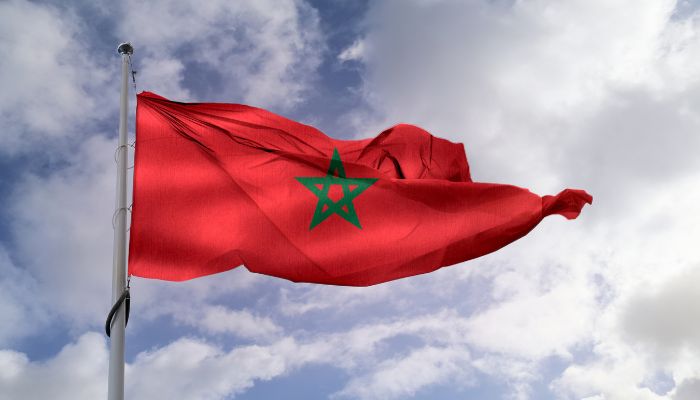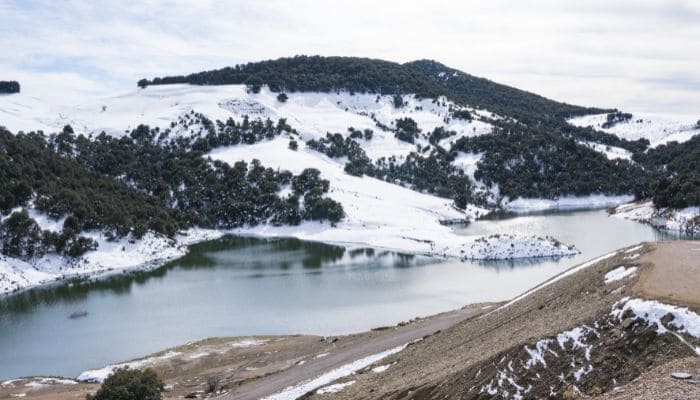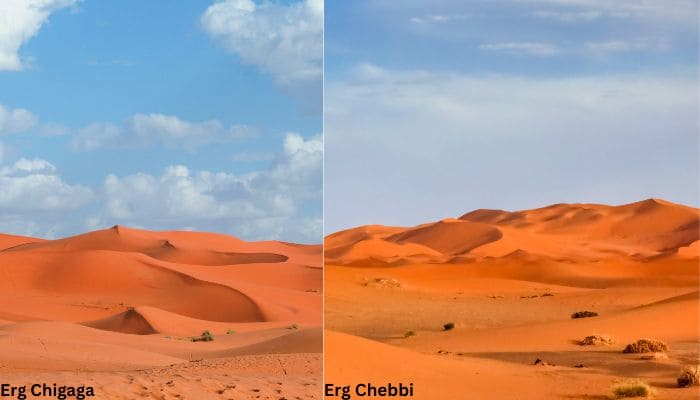The Moroccan flag has a rich history that stretches back more than a thousand years. As a symbol of the nation’s history, the flag is usually associated with several historical figures in the history of Islam. They include the Idrisid dynasty to the Alaouite dynasty, which adopted the dark background featured on the current Moroccan flag.
While the first Moroccan flag bears no resemblance to the modern version, it influenced the design of the current flag. Today, the modern flag has a dark red background with a green pentagram at its center.
Want to learn more about the Moroccan flag’s history and the meaning of its colors and emblem?
Keep reading!
Morocco Flag History
In the Early Middle Ages, different cultures and religions including Islam established the use of flags. This tradition continues to influence their use even today. Back then when Islamic armies expanded westward across Africa, they favored large military flags of plain colors. These colors were usually associated with particular dynasties.
Besides the color, the field of the flag had inscriptions from the Quran or ornaments. For example, the ruling dynasties of Morocco had their flags characterized by a single color, such as white or red. Some had inscriptions while others did not.
Speaking of the Moroccan flag, the first flag belonged to the Idrisid dynasty which ruled Morocco from 788. The flag had white background with no ornaments or inscriptions. The Idrisid is always credit as the first dynasty to bring together the people of Morocco under Islam. In fact, they introduced the Sharifi tradition. As a result, the Idrisid dynasty is always recognized as the father of the state.
Between 1040 to 1147, a regime called Almoravid introduced a new flag with a white background and Arabic text at the center. However, the Almohad Caliphate is the dynasty that started using the flag with a red background. At the center of the flag, there was a checkered black and white square.
When the Marinid dynasty took over in 1244, they retained the flag’s red background, but they removed the checkered black and white square. In its place, the flag had a golden-bordered rectangle. At its center was an eight-pointed star that they derived from combining two squares. They retained even after the end of the Marinid dynasty. In fact, the Saadi and Wattasid dynasties adopted it.
In 1666, a new dynasty – Alaouite – took over and adopted a flag with a plain red background. They used this design until 1912 when Morocco came under the rule of Spain and France.
The French protectorate ruled the areas between the Corridor of Taza and the Draa River. Its capital was Rabat, which is the official capital of modern Morocco. During the rule of the French between 1912 to 1956, the flag of Morocco consisted of a red field with a green pointed star at its center.
However, the north region was under the rule of Spain and had a different flag – one with a red field and a green-white bordered flag. It also had a white pentagram within the green field.
In 1955, Sultan Muhammad V, the Sultan of Morocco returned to the country from exile. At the capital of Rabat, he gave a triumphant speech that announced the end of French and Spanish rule. In 1956, Morocco gained independence, and they adopted the flag that we see today.
Morocco Flag Meaning
The Moroccan flag has a red background with a black-bordered green pentagram star. But do you know the meaning of the emblem and the colors? Read on.
Emblem
As aforementioned, the Moroccan flag has a green pentagram at its center. This emblem is a symbol of the five pillars of Islam namely:
- Hajji
- Fasting
- Prayers
- Alms
- The Shahada
Besides representing the country’s religion and faith, it also symbolizes a connection between the king and Allah. Before 1915, the Moroccan flag had a 6 pointed star. However, during the French and Spanish rule, they changed the emblem to a 5 pointed star. In fact, they did so without giving any official explanation. Even after the French and Spanish rule ended, the use of the emblem continued.
What many people don’t know is that the pentagram is the Seal of Solomon and dates back to the Babylonian era. It’s believed that God gave King Solomon the ring so that he could command demons and talk to animals.
Shape
The Moroccan flag’s length-to-width ratio is 2:3 while the diameter of the pentagram is ⅓ of the length. Each of the five pointers of the pentagram is 1/20 of the length. Enclosing the pentagram is an invisible circle that takes up ½ of the height of the emblem. This invisible circle is visible on the official Moroccan Royal navy flag.
The flag is usually designed from a grand taint material that’s bright red and rectangular. The star’s design is overture while its shade is a green palm tree shade. During the design of the flag, they weave the star into the fabric making sure it’s visible on both sides of the material.
Morocco Colors
The red field is one of the most prominent colors of the Pan-Arabic era. Not only that. The color has significant importance and implication in Morocco. First, the color red announces the descent from the royal Alaouite dynasty. Linked to prophet Muhammad via Fatimah, the wife of Ali, fourth Muslim Caliph, the red color was also used by the Imams of Yemen and sheriffs of Mecca.
As aforementioned, the color of the Moroccan flag was dark red during the Alaouite dynasty in the 17th period. This color is often associated with victory on the battlefield and symbolizes valor, strength, and courage.
Second, the color red also has a meaning in Islam. In fact, it has an ambivalent meaning – the color of love, and ripe fruit. It’s also the color of fire, blood, and war.
In 1915, during the reign of Mulay Yosef, the green pentagram was interwoven into the national flag. The green color has a meaning in Islam.- it signifies paradise in the Quran.
However, the green color on the Moroccan flag symbolizes love, peace, joy, hope, and wisdom. Since Moroccans are deeply patriotic, the flag is a symbol of liberty and a reminder of their country’s independence and rich history.






